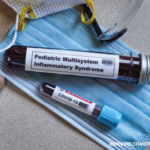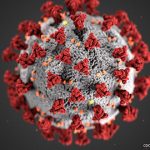I never wake up late.
This wasn’t always the case. All the way through residency, I was completely dependent on alarm clocks to keep from oversleeping. So much so that when my alarm clock broke halfway through my internship, I replaced it the next day. I remember driving in the middle of the night to the only store that was still open to purchase a fancy clock-radio for $49—a fortune at the time. Still, I needed something to roust me from bed the next morning, and the shelves were almost bare. My choices came down to this deluxe model, with a CD player and two alarms featuring your choice of three electronic melodies, or a wind-up alarm clock—the type that mustachioed villains attach to bundles of dynamite before the hero swoops in to save the girl. I just couldn’t chance it.
I still own that alarm clock. It sits near the head of my bed softly blinking 12 p.m. Whenever there is a power outage, my clock resets to noon. For years, I would dutifully correct the time, but at some point, I stopped. It just wasn’t necessary. At some point after my residency training—my sleep deficit almost fully repaid—I just started waking up at 6 a.m., plus or minus a few minutes. Even on my days off, I generally find it difficult to sleep in; after a few tries, my eyes open wide, and I get out of bed to start my day, whether or not I have anywhere to go.
This day was different. When I opened my eyes, I could see the soft glow of daylight coming through the window, and I started to relax, ready for a lazy Sunday. Suddenly, I realized it was not Sunday. It was Tuesday, and my first patient’s appointment started in 10 minutes.
I blame the pandemic. Like most of you, I have been working from home for most of this year. At some point, I realized an odd side effect of this new routine was that my workdays stretched into the night. Last year, the drive home served to separate work life from home life. When your office is your living room, the delineation is less clear. Progressively, my workdays became longer, and I started to go to bed later, until it finally had an impact on the homeostasis of my morning routine.
I flew out of bed and into the shower, rinsing off the previous day with cold water that was taking too long to turn warm. After a quick look in the mirror, I decided that fortuitous genetics and bad lighting would allow me to get away without a shave, and I ran downstairs, grabbing yesterday’s shirt along the way.
I like coffee. I don’t drink as much as I used to, but I’m still particular about how my beans are roasted and brewed. I’ve recently taken to using a Hario V60, which is used in barista competitions. Thirty grams of coffee, freshly ground to the size of beach sand, combined with water from a gooseneck kettle, fresh off the boil. After the initial bloom, water is gradually added in lazy circles to a total of 500 g. I’ve taken to experimenting with the grind and the coffee to water ratio, to try to bring out the berry notes that characterize the best African beans.
On this particular morning, adrenaline coursing through my body, I finally saw this technique for what it truly was: a ridiculously antiquated ritual that was keeping me from getting my fix. What I really wanted was a Mr. Coffee machine and a blue can of Maxwell House.



